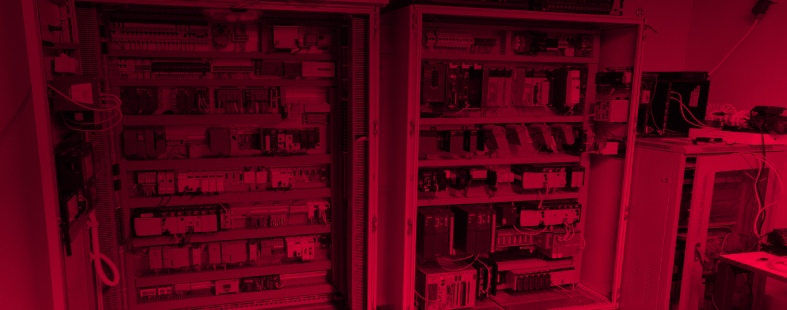
Team82 has made freely available a tool called AccessDB Parser
The Python-based AccessDB Parser supports software testing, fuzzing, research, and other activities
It supports Microsoft Access versions 1995 up to 2010
Team82 today shares AccessDB Parser, a new, purpose-built tool we developed to support activities such as testing, automation, fuzzing, and reverse-engineering research, among others. The standalone tool—which can be used to quickly parse through Microsoft AccessDB files (.mdb/.accdb)—is fully written in Python, thus eliminating any external binary dependencies.
Our parser supports Microsoft Access versions 1995 up to 2010. Microsoft Access is a database management system from Microsoft that combines the relational Microsoft Jet Database Engine with a graphical user interface (GUI) and software-development tools. It is a member of the Microsoft Office suite of applications, included in the Professional and higher editions or sold separately.
According to Claroty Researcher Uri Katz, who led the development of AccessDB Parser, the initial purpose of the tool was to support Claroty Continuous Threat Detection (CTD)'s Application DB (AppDB) scanning capabilities. Unique to Claroty, AppDB provides a safe, effective, and non-intrusive method for identifying and managing assets in operational technology (OT) environments by parsing artifacts such as programmable logic controller (PLC) and remote terminal unit (RTU) project configuration files.
As part of Claroty's efforts to deliver the highest level of visibility into OT environments, we sought to develop a tool that would allow AppDB to process additional types of SCADA project files containing .mdb files. In addition, we wanted this tool to allow us to create multiple tests, verify test results, and automate some of our testing processes.
To address these needs, we decided to invest time in developing our own parsing tool, below, which could easily be modified and improved on an ongoing basis as our needs evolve. We ensured to make the tool open-source, knowing that it would likely prove useful for other reverse engineers.
C Implementation: Our library of tools relies heavily on the well-documented work of mdb-tools, which can be accessed here.
Java Implementation: We also benefited greatly from Jackcess, an all-Java library for reading from and writing to MS Access databases, currently supporting versions 2000-2016. Jackcess is not an application and does not have a GUI. Rather, it is intended to help developers build Java applications.
OLE fields are currently not supported.
Only a subset of memo fields are parsed.
This library was tested on a limited subset of database files. Due to the differences between database versions and the complexity of the parsing, we expect to find more parsing edge-cases.
To help us resolve issues faster, please provide as much data as possible when opening an issue, including the DB file if possible, as well as full trace, including log messages.
Click here to watch a demo of Claroty AccessDB Parser
Click here to download the tool on Claroty's GitHub repository

CWE-79 IMPROPER NEUTRALIZATION OF INPUT DURING WEB PAGE GENERATION ('CROSS-SITE SCRIPTING')
The affected product is vulnerable to a reflected cross-site scripting vulnerability, which could allow a remote attacker to execute arbitrary JavaScript on the victim's browser.
Zenitel recommends users to upgrade to Version 9.3.3.0 or later.
CVSS v3: 9.8
CWE-787 OUT-OF-BOUNDS WRITE
The affected product is vulnerable to an out-of-bounds write vulnerability, which could allow a remote attacker to crash the device.
Zenitel recommends users to upgrade to Version 9.3.3.0 or later
CVSS v3: 7.6
CWE-78 IMPROPER NEUTRALIZATION OF SPECIAL ELEMENTS USED IN AN OS COMMAND ('OS COMMAND INJECTION')
An OS command injection vulnerability exists due to incomplete validation of user-supplied input. Validation fails to enforce sufficient formatting rules, which could permit attackers to append arbitrary data. This could allow an unauthenticated attacker to inject arbitrary commands.
Zenitel recommends users to upgrade to Version 9.3.3.0 or later
CVSS v3: 9.8
CWE-78 IMPROPER NEUTRALIZATION OF SPECIAL ELEMENTS USED IN AN OS COMMAND ('OS COMMAND INJECTION')
An OS command injection vulnerability exists due to insufficient sanitization of user-supplied input. The application accepts parameters that are later incorporated into OS commands without adequate validation. This could allow an unauthenticated attacker to execute arbitrary commands remotely.
Zenitel recommends users to upgrade to Version 9.3.3.0 or later.
CVSS v3: 9.8
CWE-78 IMPROPER NEUTRALIZATION OF SPECIAL ELEMENTS USED IN AN OS COMMAND ('OS COMMAND INJECTION')
An OS command injection vulnerability exists due to improper input validation. The application accepts a parameter directly from user input without verifying it is a valid IP address or filtering potentially malicious characters. This could allow an unauthenticated attacker to inject arbitrary commands.
Zenitel recommends users to upgrade to Version 9.3.3.0 or later
CVSS v3: 9.8